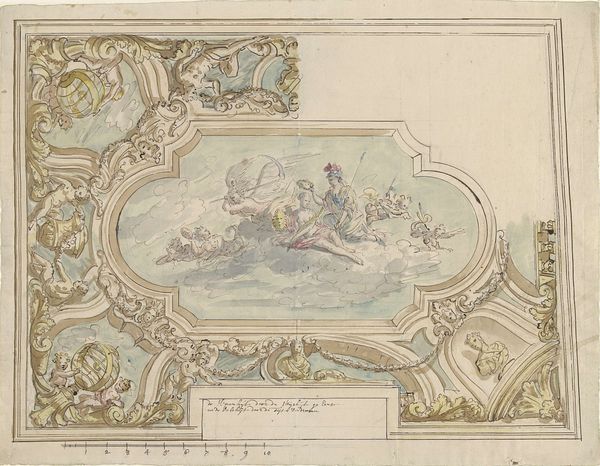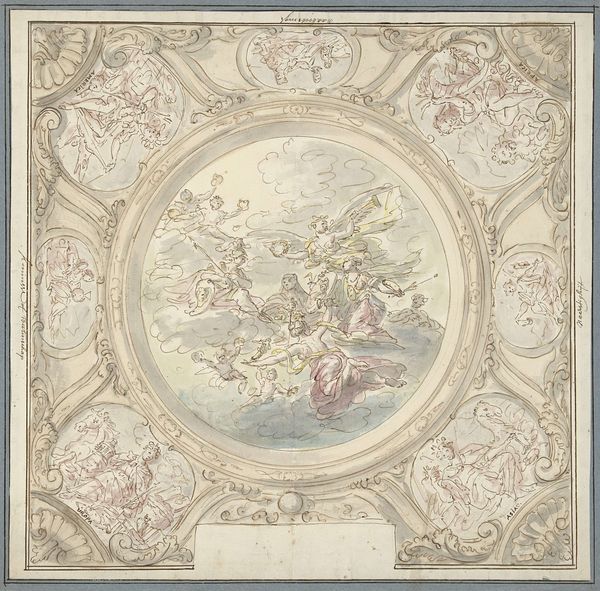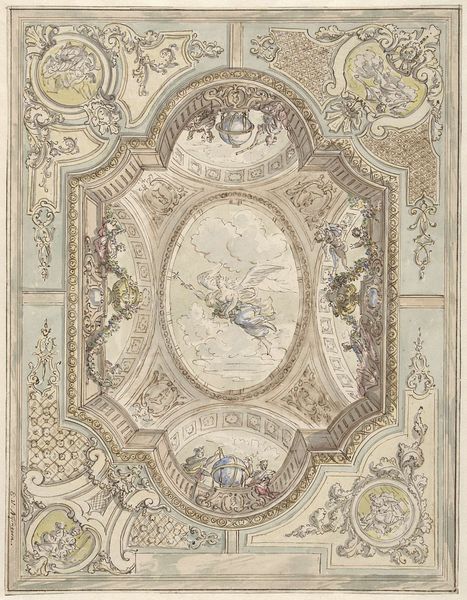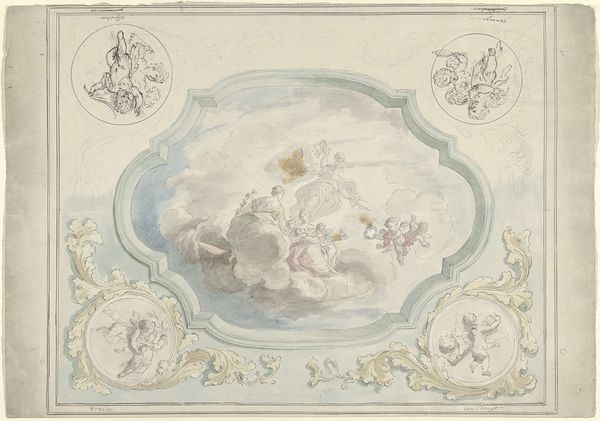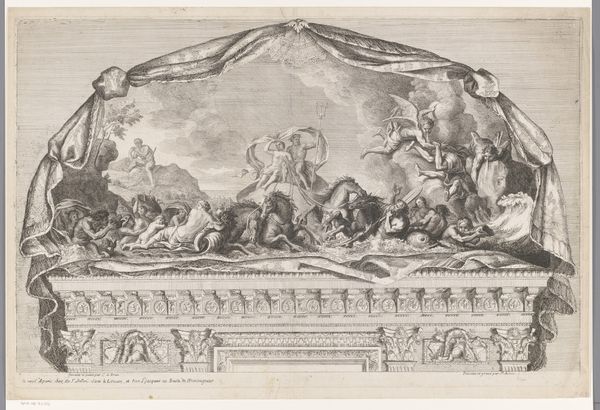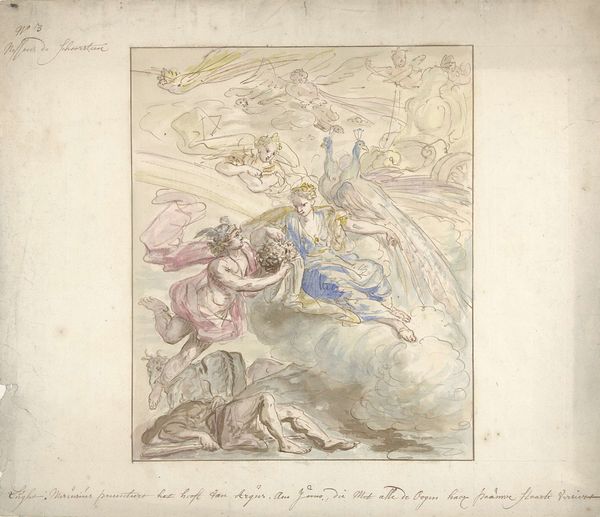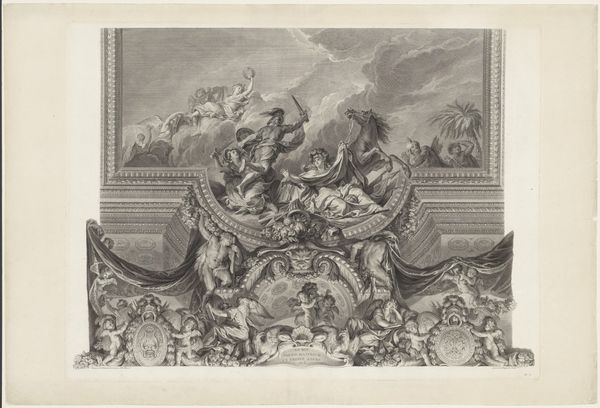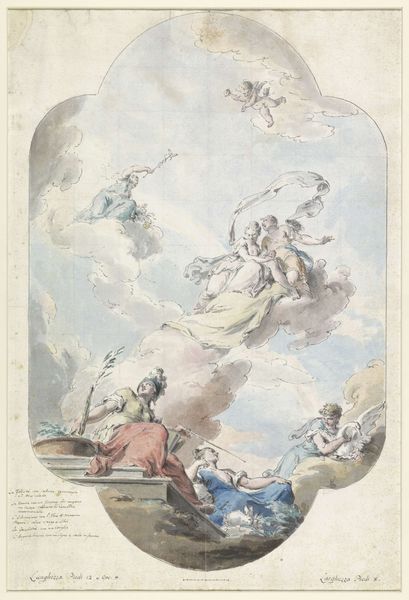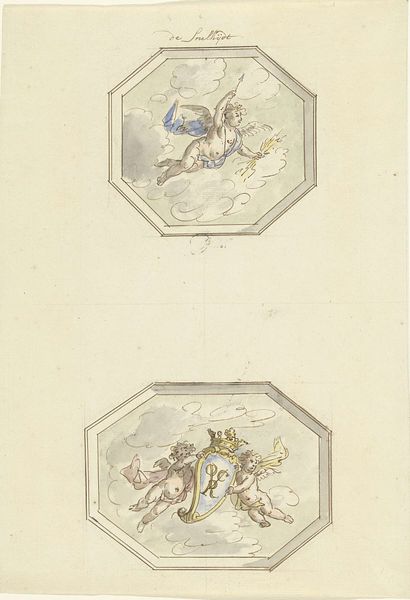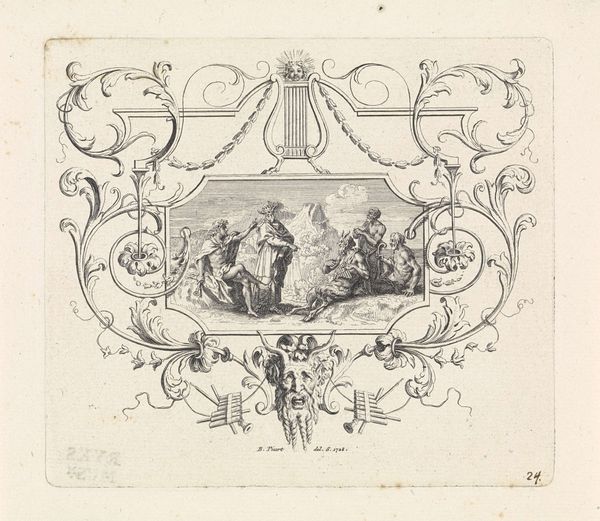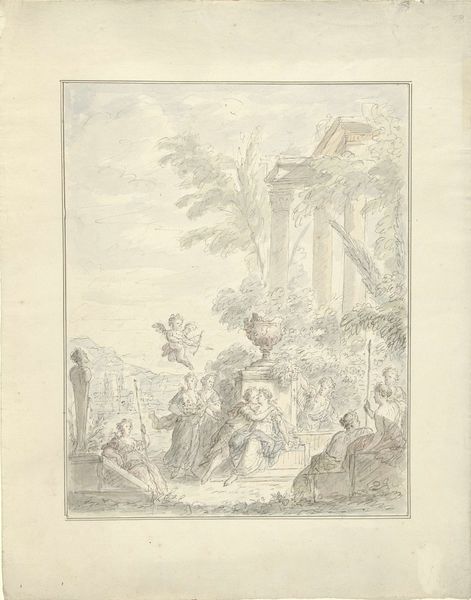
Dimensions: height 369 mm, width 500 mm
Copyright: Rijks Museum: Open Domain
This is a design for a ceiling painting with the allegory of fame, created by Elias van Nijmegen in the late 17th or early 18th century. It's rendered in pen, with a watercolor wash that gives it a delicate, ethereal quality. The drawing's muted tones and flowing lines show a complex process. Nijmegen would have first sketched the composition with a light hand, establishing the placement of figures and architectural details, before applying layers of watercolor to build up depth and shadow. The controlled application of the wash reveals the artist's mastery of the medium. The design's ornate quality would have been in high demand by wealthy patrons looking to adorn their homes with symbols of wealth and status. This drawing invites us to think about the social context in which it was made and the amount of work involved in its production. By examining the materials, processes, and the world of elite patronage, we can fully understand its significance, blurring the lines between fine art and craft.
Comments
No comments
Be the first to comment and join the conversation on the ultimate creative platform.
